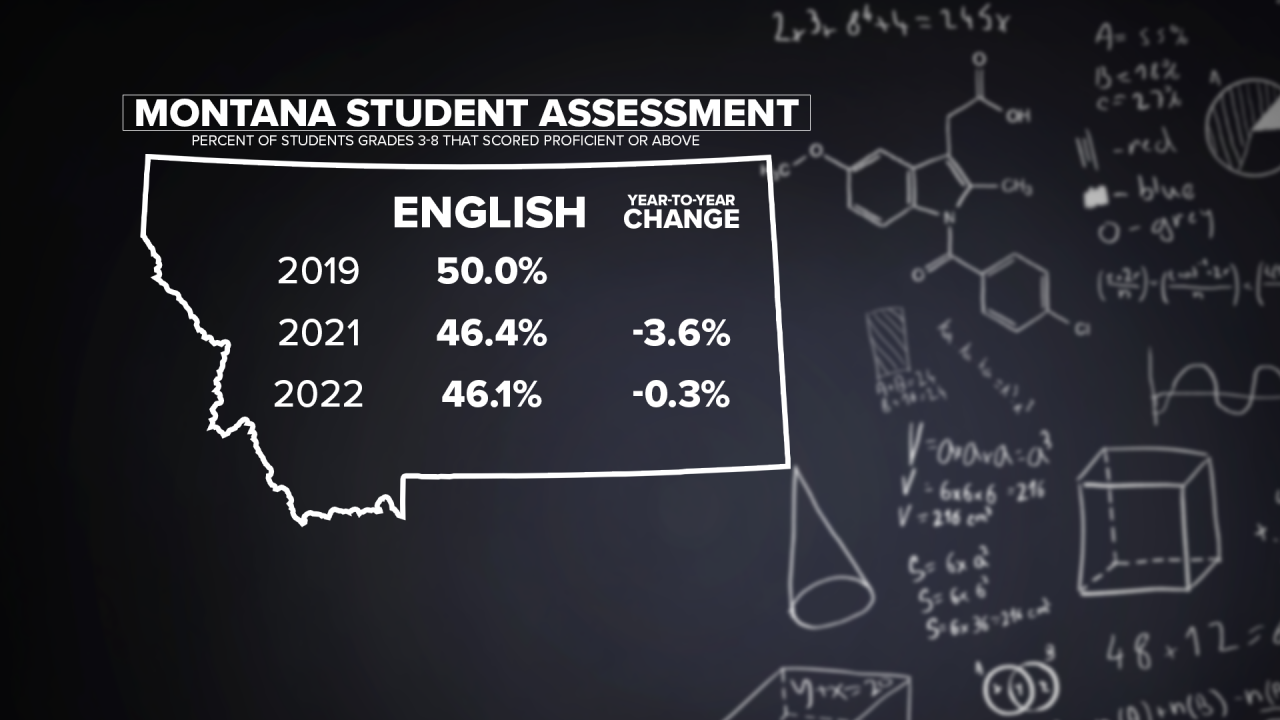HELENA — On Monday, the Montana Office of Public Instruction released student assessment data from the 2021-22 school year – results that showed statewide test scores remained roughly on par with the previous year, but still below what the state saw before the start of the COVID-19 pandemic.

In this spring’s Smarter Balanced assessments, given to third through eighth graders across Montana, 36.5% of students statewide scored “proficient” or above in math in 2022. That’s up slightly from 35.6% in 2021. Students did not take the standardized tests in 2020 because of a federal waiver during the pandemic. In 2019, 41.9% of students were at least proficient in math.

In English, 46.1% of Montana students scored proficient or better in 2022, compared to 46.4% the year before and 50% in 2019.
During a meeting of the Montana Legislature’s Education Interim Committee Monday, several hours before the results were made public, Superintendent of Public Instruction Elsie Arntzen spoke briefly about what they were going to show.
“I can share with you we have a lot of work to do, and I want to give a lot of grace to our schools still,” she said.
The Office of Public Instruction said Monday that Arntzen is working on several initiatives to address students’ learning needs, particularly in math. They include updating the state math standards and creating “math innovation zones” to assist teachers. In addition, the state is launching a pilot program this year, to test a new standardized testing model that includes multiple tests throughout the school year.

This year’s Smarter Balanced test results show similar patterns at the local level as well as the state level. In Bozeman Public Schools, assessment scores improved in 2022, with 56.1% of students proficient or better in math and 65.9% proficient or better in English – compared to 56% and 65.7% respectively in 2021. However, both numbers remained lower than in 2019, when 61.3% of students were at least proficient in math and 70.1% in English.

In the years since the start of the pandemic, Montana tutoring services say they have definitely seen a growing need for students to catch up on educational gaps.
“Parents are realizing that their kids did miss something being at home often and trying to do so much on their own,” said Charlene Kautzman, director and owner of Sylvan Learning of Helena. She and her husband Ron have operated the center for nearly 30 years.

Kautzman said many of the middle and high school students they’re seeing are in need of math help, while for younger kids, many of the challenges are in English.
“Working with correct formation of letters – if they were at home and the teacher was in the classroom, the teacher wasn’t able to see if the students were correctly forming letters, and that’s very important for development,” she said.
Kevin Leatherbarrow is co-director of Go and Grow Education Services in Great Falls, along with his wife Annie. He says the students they work with also need help in reading comprehension.
“They have missed those phonics, those phonemes, those things that really make those connections to start readers where they need to be,” he said.
Leatherbarrow says special education students have been especially impacted during the pandemic.
Go and Grow has seen a spike in demand each of the last two years. Kautzman says Sylvan is serving about the same number of students in Helena that they typically would, but they generally have deeper needs.
Leatherbarrow says for the families he talks to, changes in how kids react to their schoolwork have been a sign they may need extra assistance.
“That’s one of the biggest complaints we’ve seen from the parents when they come in: Now they’re just not interested in doing it because they feel ill-confident enough to get back into those norms,” he said.
Kautzman says reading at home and listening to your kids read can show you a lot.
“If they’re just hurrying and guessing, then the word attack skills aren’t what they need to be,” she said.




